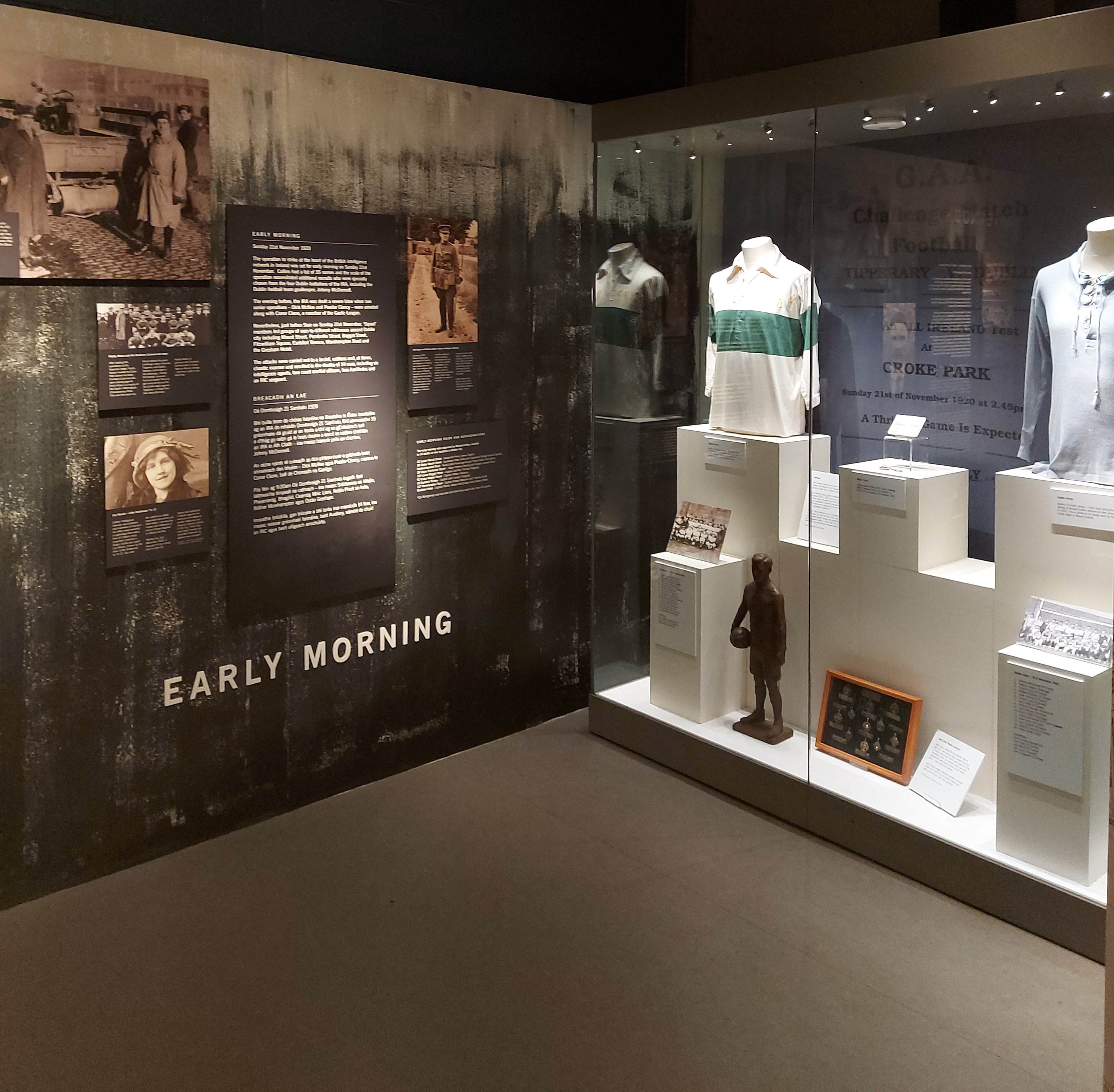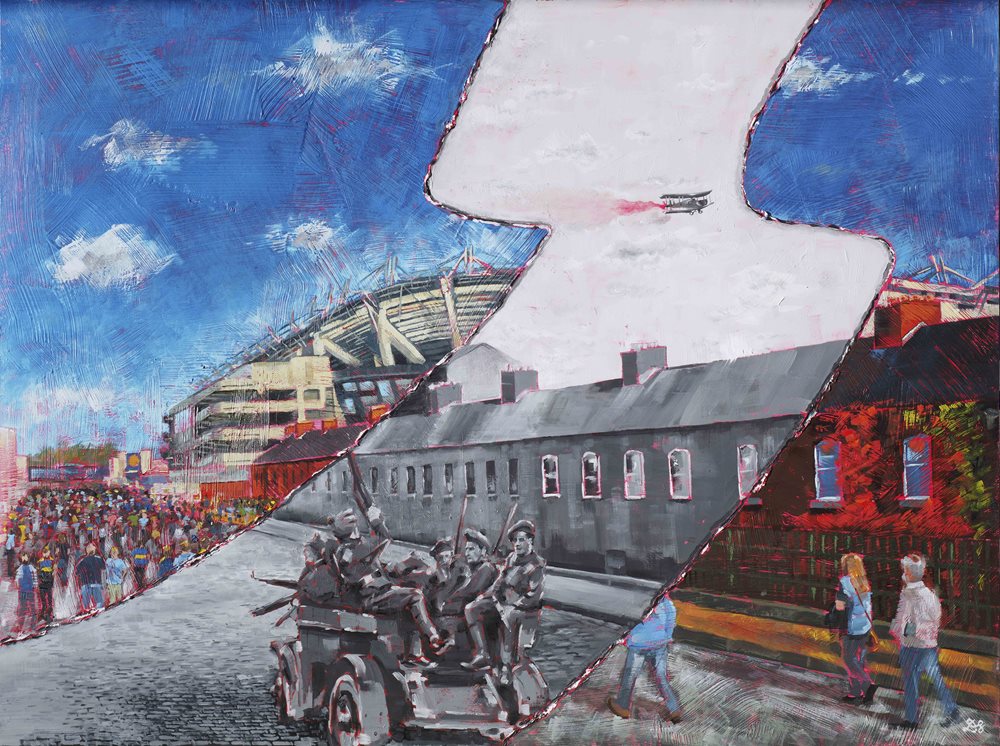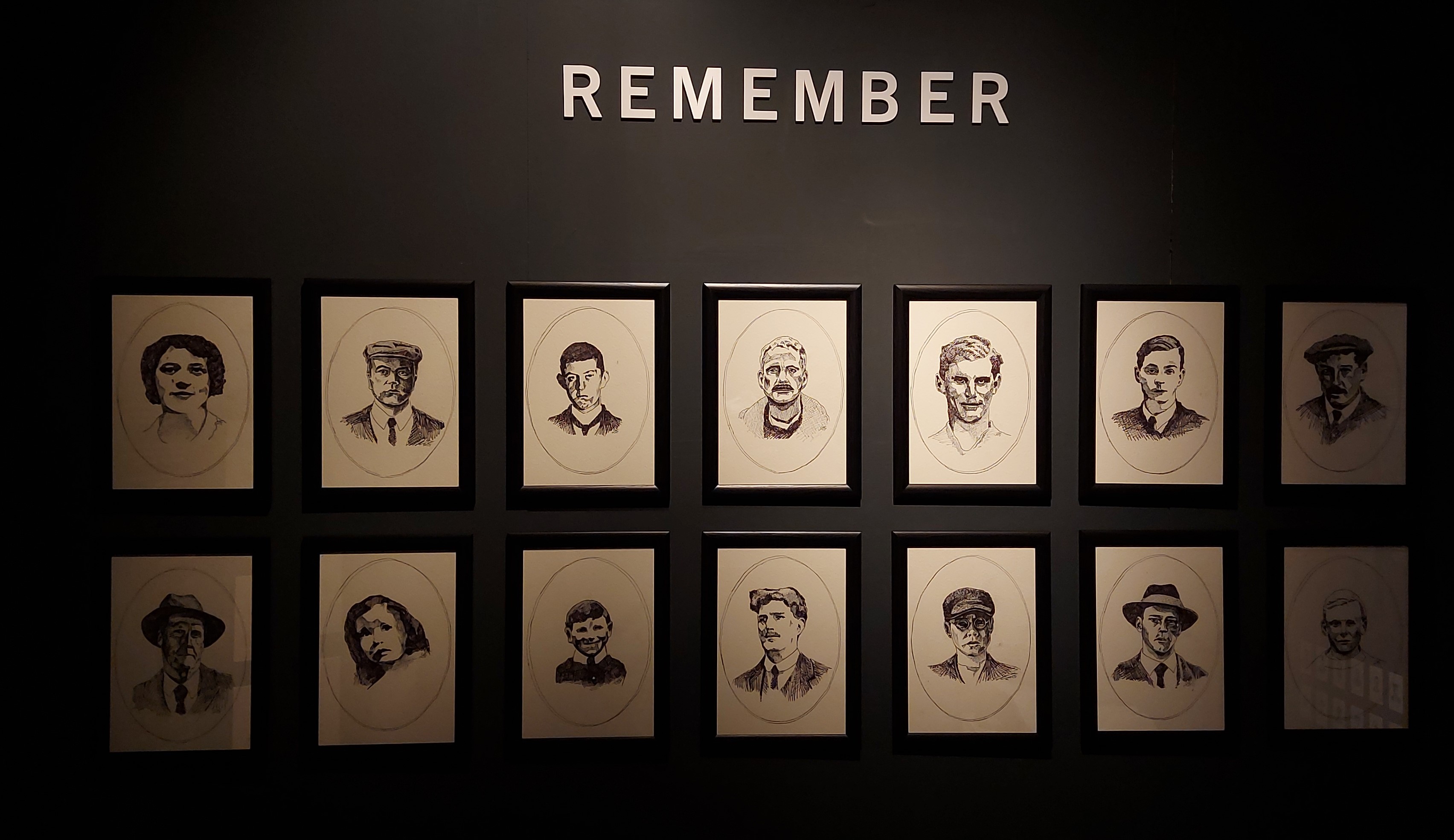- Back
16/09/2020
Remembering Bloody Sunday Exhibition opens at the GAA Museum
A new
Remembering Bloody Sunday exhibition has opened at the GAA Museum. This focal point for the museum’s Bloody Sunday centenary programme explores the tragic events that unfolded on November 21
st 1920 and their impact on Irish history through artefacts, official documents, and photographs. At the heart of the exhibition is a focus on the 14 civilians killed at Croke Park.
The exhibition honours the victims, tells their stories, and provides visitors with a place to reflect and learn more about the events surrounding the darkest day in GAA history.

A collection of items on display at the new Remembering Bloody Sunday Exhibition
Memorabilia and artefacts on display includes letters sent to family members in the aftermath of the shootings, medals from players who played for both Tipperary and Dublin on the day, portraits of those who list their lives, and personal items belonging to the victims and those in attendance. There is also a cymbal from the band that opened the fateful match, which is on loan from the Brother Allen Collection in the Military Archives, as well as a burial register from Glasnevin Cemetery Museum.
The painting ‘Transilience’, a special commission by the GAA Museum to mark the 100th anniversary of Bloody Sunday, is also on view. ‘Transilience’, which means an abrupt change or leap from one state to another, was created by artist David Sweeney, who is a former Dublin GAA senior hurling captain and the GAA’s eLearning Manager at Croke Park.

Transilience, a specially commissioned painting by David McSweeney
Audio recordings of extracts from eye-witness accounts of the events in Croke Park on 21
st November 1920, featuring the voices of the GAA Museum tour guides, play in the background as visitors move through the exhibition space.
Curator of the Bloody Sunday exhibition, GAA Museum Curator Joanne Clarke said: “
It was a pleasure to research, develop and unveil this new exhibition. Bloody Sunday was a turning point in the Irish War of Independence, and it is not just a part of GAA history, it is a part of the history of Ireland. I’d like to thank the families of the victims, players and spectators who took the time to share their stories and kindly give precious items to the museum on loan for display so that we can all learn more about the tragic events of that day.”

The 14 victims of Bloody Sunday
GAA Museum Director Niamh McCoy said: “
It’s a very special moment for us at the GAA Museum to open this exhibition to the public. While we are currently operating with limited visitor numbers, rest assured that the exhibition will remain in place for some time so that everyone who wishes to visit will have a chance. We are signed up to the Fáilte Ireland Covid Safety Charter and can welcome visitors safely and provide them with this incredible space in which to learn more about Bloody Sunday in this anniversary year.”
The Bloody Sunday exhibition was supported by the Department of Media, Tourism, Arts, Culture, Sport & the Gaeltacht, which provided funding under the Regional Museums Exhibition Scheme. The GAA Museum collaborated with designer Eamonn O’Sullivan from Kenmare-based Anchor Studio to develop the exhibition scheme and design.
A visit to the
Remembering Bloody Sunday exhibition, located on the ground floor of the GAA Museum, is included with all Croke Park Stadium and Skyline Tour tickets. There are also some museum-only tickets available daily at 1.30pm, 2.30pm and 3.30pm. To allow for social distancing, only 6 places are allowed per time slot. The price is €8 for an adult, €7 for Student/Senior, €6 for a children. Families are €20 for 4 and €21 for 5.
All tours and museum tickets must be booked online in advance and visitors must familiarise themselves with the GAA Museum’s
guidelines and procedures concerning preventing the spread of Covid-19 in advance of travelling.
Book Now
- Back